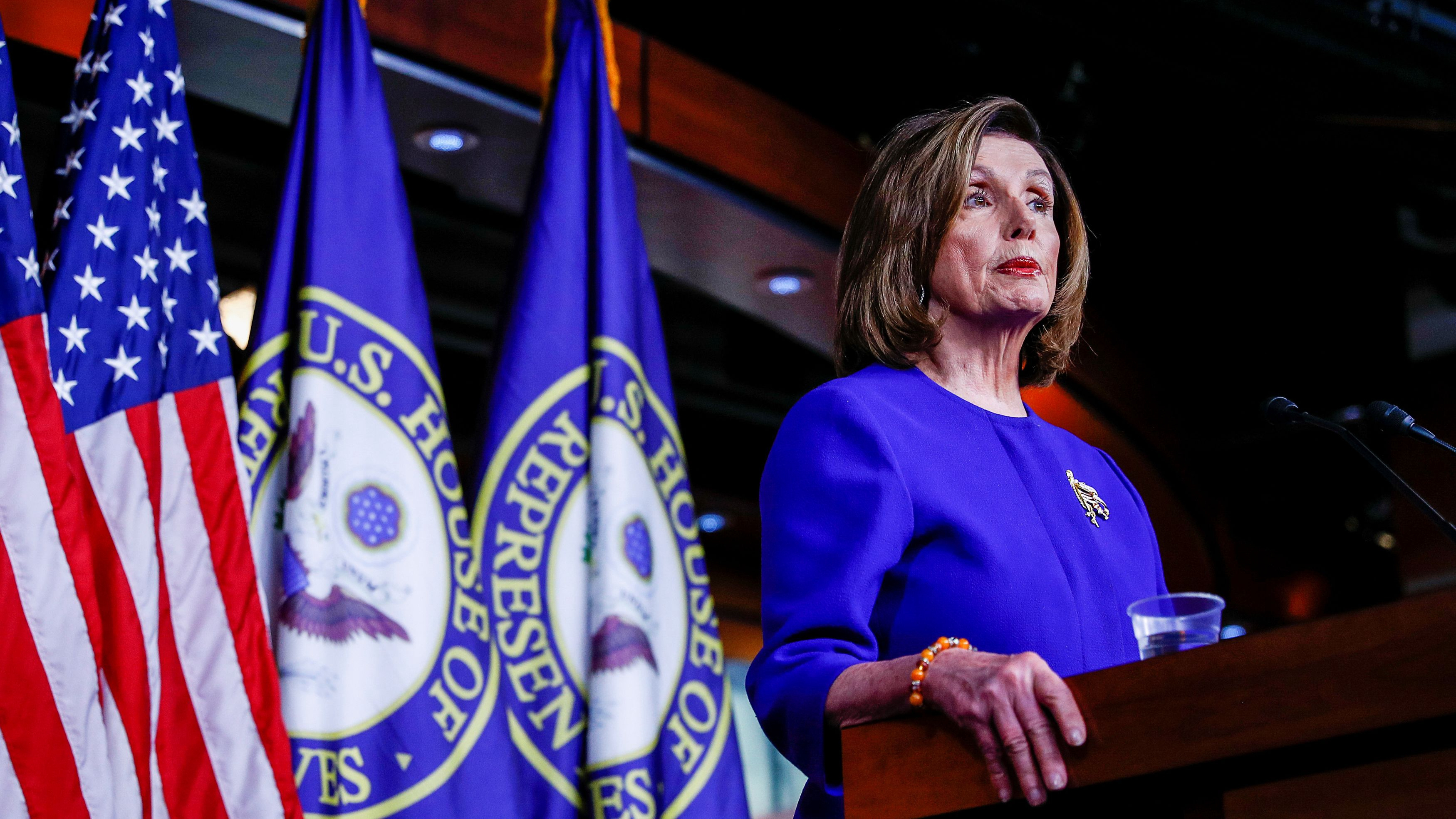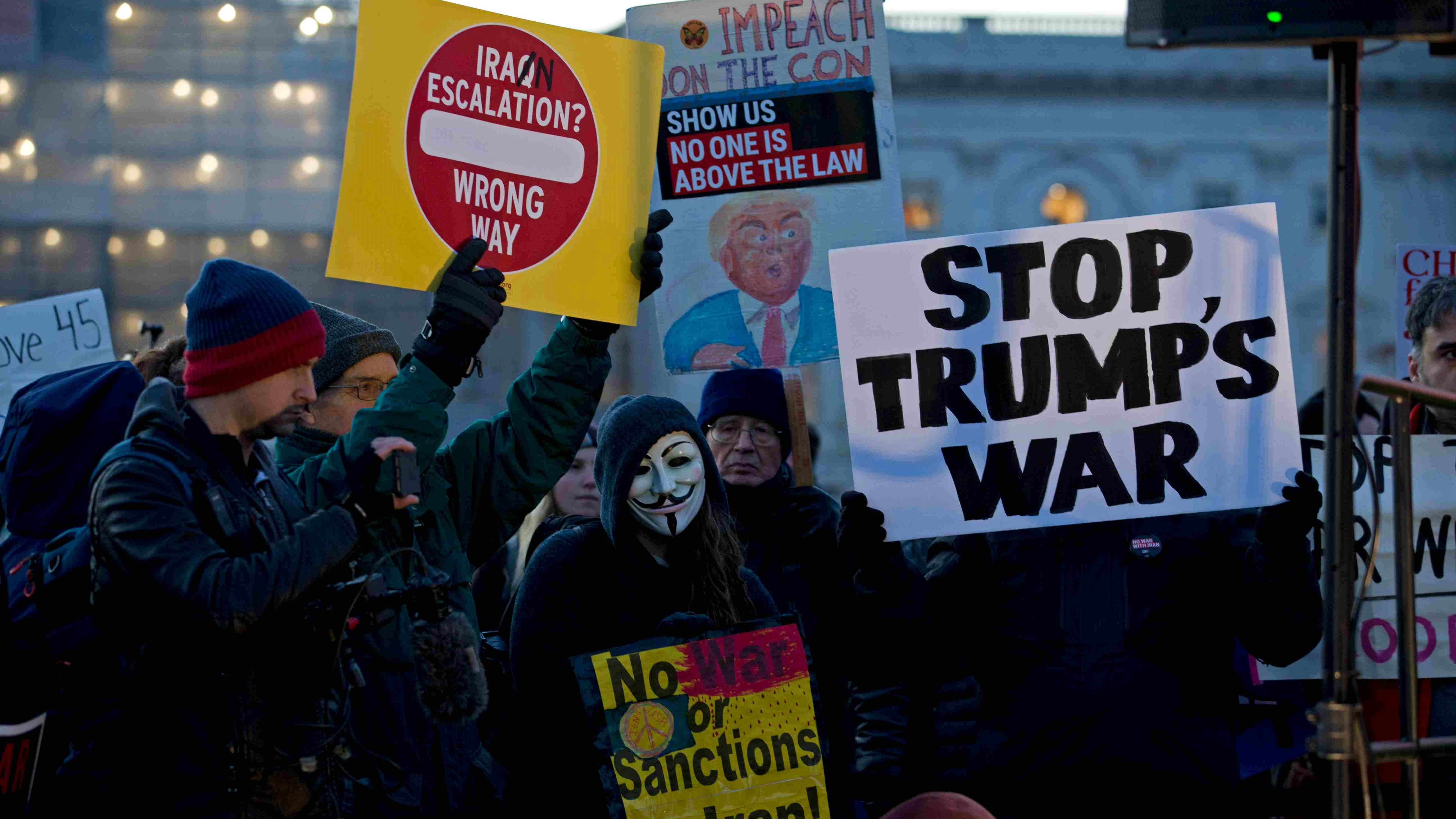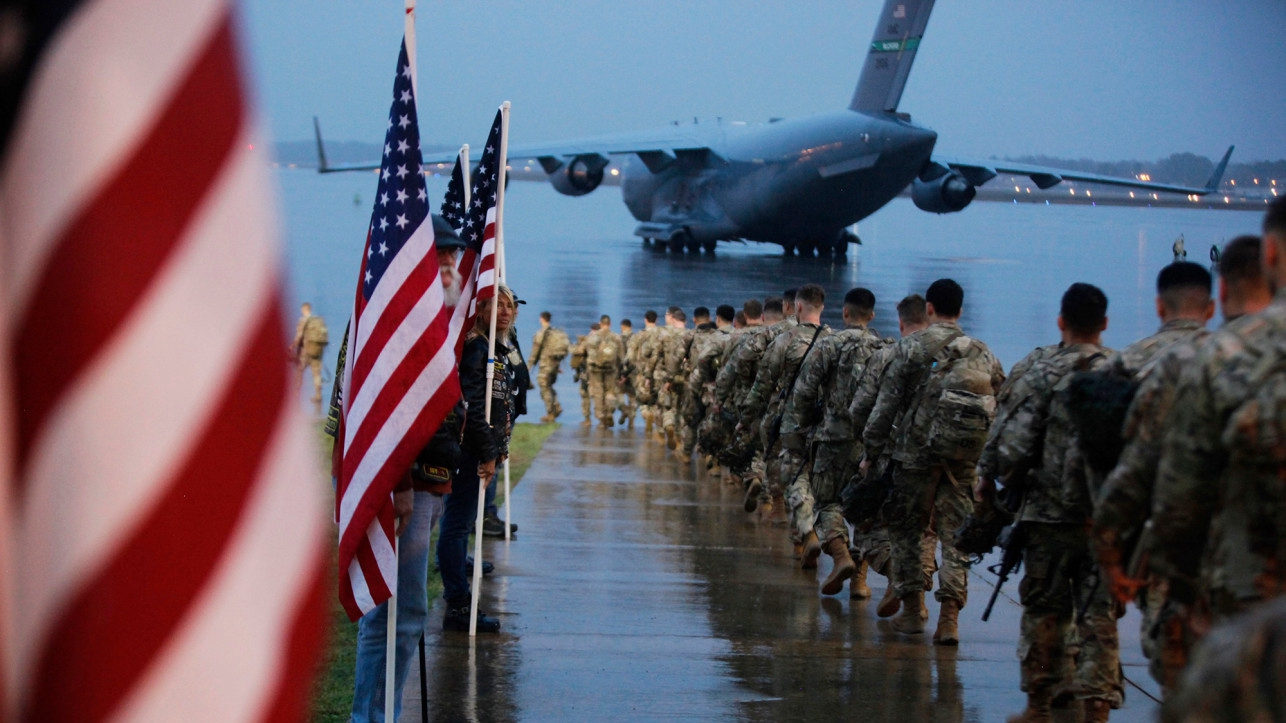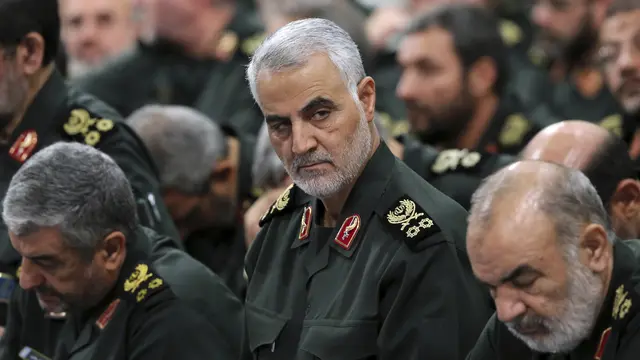While the world's attention is focused on the Ukrainian jet tragedy which took 176 innocent lives and Iran's acknowledgement of downing the plane "unintentionally," one should never forget the direct cause – U.S. killing of Iran's top general Qasem Soleimani, as Iran at that time was ready for an "all-out war" with the U.S.
Let's bring the attention back to the killing order as the action, which came four days after entering a new decade, is undoubtedly stirring up a new wave of turbulence in the Middle East. Here are three reasons why the killing has shaken the world.
The target: Iran's revolutionary icon
It is neither the first time for the U.S. to carry out assassination with a drone nor the first time for it to commit targeted killings, but one must distinguish the act of killing "terrorists" (ISIL leaderAbu Bakr al-Baghdadi, for example) from killing a senior officer of a legitimate government.
The target this time was
a vital character
in Iran's domestic politics who also has profound influence in the region.
In Iran's domestic politics, General Suleimani, the commander of Iran's elite Quds Force, was considered as the second most powerful person in Iran after its supreme leader. Iran's right-hand man built Iran'sintelligence and military operations abroad and gradually gained popularity both at home and in the region in his decades fighting against the U.S.

The late Major General Qasem Soleimani, commander of Iran's Quds forces, was killed in a U.S. airstrike. (Credit: AP)
Diplomatically, Suleimani was recognized as a linchpin of the Islamic republic's foreign policy who can spread his influence to the region. According to a message sent to U.S. General David Petraeus, Suleimani admitted that he can "control the policy for Iran with respect to Iraq, Lebanon, Gaza and Afghanistan."
Mentally, Suleimani's relentless fighting has also made him a revolutionary icon and a "living martyr of the revolution" for many in the Middle East in the four-decade resistance against the West.
Apart from that, as a famous Shiite representative, the death of Suleimani not only angered Iran, but also provoked a storm among all Shiite Muslims, Shiite-led governments headed by Iraq, Syria, Lebanon and numerous Shiite military groups.
Repercussion came quickly after the assassination. On January 4, a red flag was unfurled over the holy dome of Jamkaran Mosque in Qom, symbolizing severe revenge. Next day, Shiite representatives in Iraq's parliament passed a non-binding resolution urging the government to end the presence of foreign forces in the country.
More blood is expected to be shed following the statement of Suleimani's successor Esmail Qaani who promised to follow the path of martyr Suleimani and take "certain actions" to "get rid of America from the region." Hezbollah leaderHassan Nasrallah echoed, saying the death of Suleimani would inspire "many more martyrs to blow themselves up."

A view of the gathering at the Enqelab Square during the funeral of top Iranian general Qasem Soleimani, Tehran, Iran, January 6, 2020. /Reuters Photo
The method: A 'defensive' drone assassination
The legality and justification of the killing is perhaps the biggest and perhaps the most controversial issue as both Iran and Iraq claimed that Soleimani's death was a politically motivated "assassination."
While U.S. Secretary of State Mike Pompeo, describing the operation as a "defensive response," said the operation was authorized by U.S. President Donald Trump because Soleimani was "plotting imminent attacks" in the region that would put "dozens, if not hundreds of American lives at risk."
Trump confirmed the remarks in an interview with Fox News, adding that he believed Soleimani was going to attack the U.S. embassy in Baghdad without giving further details.
Despite the statement, it does not change the nature of the operation – an airstrike targeting a government official which is taken without notification or permission from the Congress and Iraq.
Timing of Soleimani killing fuels Trump 'wag the dog' claims
U.S. killing of Iran's Soleimani: How the world is reacting

U.S. President Donald Trump delivers a statement about Iran, flanked by U.S. Secretary of Defense Mark Esper (L-1), Vice President Mike Pence (R-2) and military leaders in the Grand Foyer at the White House, Washington, U.S., January 8, 2020. /Reuters Photo
Many concern that the action may set a precedent and break the bottom line of international order. "You can't take aim at an official inside a government and say that is not a war," Karen Greenberg, director of the Center on National Security at Fordham University Law School said, adding that the attack could be interpreted as U.S. declaring war on Iran.
From a legal perspective, targeted killings are permitted under international law in only very narrow circumstances while the U.S. failed to provide convincing evidence.
Domestically, the U.S. refused to call the action an "assassination" as it is illegal under the U.S. federal law since 1981. But to make the strike legal, Article II of the U.S. Constitution stipulates that the U.S. must be facing an "imminent threat," a description that is vague and without precise definition.
The necessity of the operation seems untenable even to U.S. politicians as the Democrats-dominated House passed a resolution last Thursday to stop U.S. President Donald Trump from further military action against Iran, rebuking the president days after he ordered a drone strike that killed a top Iranian commander and raised
fears of war
.
Regardless of the legality, the attack itself is also striking as many fear that this relatively economical and convenient way of killing – carried out by a drone, shows the whole world a new mode of targeted killing and is likely to be emulated by other countries and even terrorist groups.

U.S. Speaker of the House Nancy Pelosi (D-CA) speaks as she addresses her weekly news conference at the U.S. Capitol, Washington, U.S., January 9, 2020. /Reuters Photo
The intention: Drifting away from Trump's withdrawal policy
The order of killing Soleimani, according to Trump, is aimed at deterring future attacks and making the Middle East safer, but the action itself seems against Trump's long proposed withdrawal policy and has brought the U.S. to the brink of war.
It is well-known that Trump wants to end the U.S. military presence in the Middle East since the day one of his inauguration. Seeing foreign deployments as pointless and costly exercises, Trump insisted in withdrawing troops and has been doing so in Syria and Afghanistan.
But Trump's tone twisted after Iraqi Prime Minister Abdul Mahdi requested a U.S. troop withdrawal following the resolution passed by its parliament. "You have to pay us for the money we put in… Otherwise we'll stay there," said Trump in an interview with Fox.
Separately, the State Department said Pompeo had discussed Iran with Canadian Foreign Minister Francois-Philippe Champagne as well as "the opportunity for an expanded NATO force in Iraq and appropriate burden sharing," signaling an increase of presence, rather than a fading trend as Trump always boasts.

Demonstrators protest outside the U.S. Capitol during a vote on limiting President Donald Trump's ability to take military action against Iran, Capitol Hill, Washington D.C., January 9, 2020. /AP Photo
The timing of the killing is also unexpected as the U.S. has been taking a relatively restraint attitude towards Iran when the latter seized oil tankers in the Sea of Oman, shot down U.S. drones and was accused of involving in attack on Saudi oil facilities.
Such inconsistency also shocks most of the U.S. allies as they find it untenable to support the killing. "We will not lament his death," but "we are in close contact with all sides to encourage de-escalation." British Prime Minister Boris Johnson concluded after an emergency meeting held by NATO alliance.
In response to doubts that Trump's move may be made to deter Iran, retired Army Lieutenant Colonel Daniel Davis said that "U.S actions have made an already volatile situation much more dangerous" and would only achieve opposite effect as Iranians "will never buckle to that kind of pressure."
Experts tried to explain Trump's sudden move from domestic politics and suggested that it could be an attempt to divert public attention from his impeachment to sustain his presidency.
The assumption is partly reasonable since Bill Clinton did similar things by ordering cruise missile strikes on al-Qaeda when he was facing Monica Lewinsky's scandal, but the tactic seems to have a mixed effect as it gives the Democrats another chance to attack Trump and accuse him of abuse of power.

U.S. Army paratroopers prepare to load an airplane bound for Kuwait. /AP Photo
What's next?
Social media remained abuzz with World War III posts on the first few days after the attack. Meanwhile, Trump's "all is well" tweet and his decision to impose new sanctions against Iran to some degree has temporarily cooled off the tensions between the U.S. and Iran.
The diplomatic response from Trump signals U.S.' decision to notprolong the conflict while Iran's statement of opening to talks also leaves space for negotiations and de-escalation.
Elizabeth Drew
,a Washington-based journalist and the author of Reporting Watergate and Richard Nixon's Downfall, held a relatively optimistic view by saying that Iran has no intention to start an "all-out war" as its carefully targeted retaliation which caused zero casualties is more prone to be a gesture.
"Iranian leaders were shrewder than Trump… They would lose a war with the U.S."
Nevertheless, the turbulence caused by the targeted killing seems just a beginning. It is possible that the current tranquility is merely the lull before the storm.
White House correspondent analysis on Trump's Iran speech
The upsurge of U.S.-Iran conflict: What does it mean for the region?
 简体中文
简体中文

